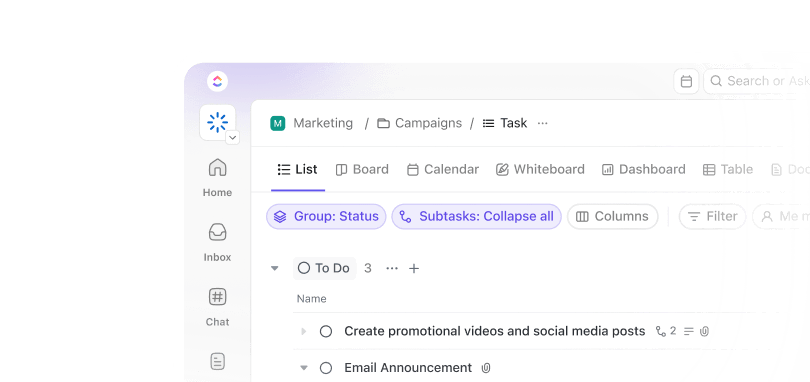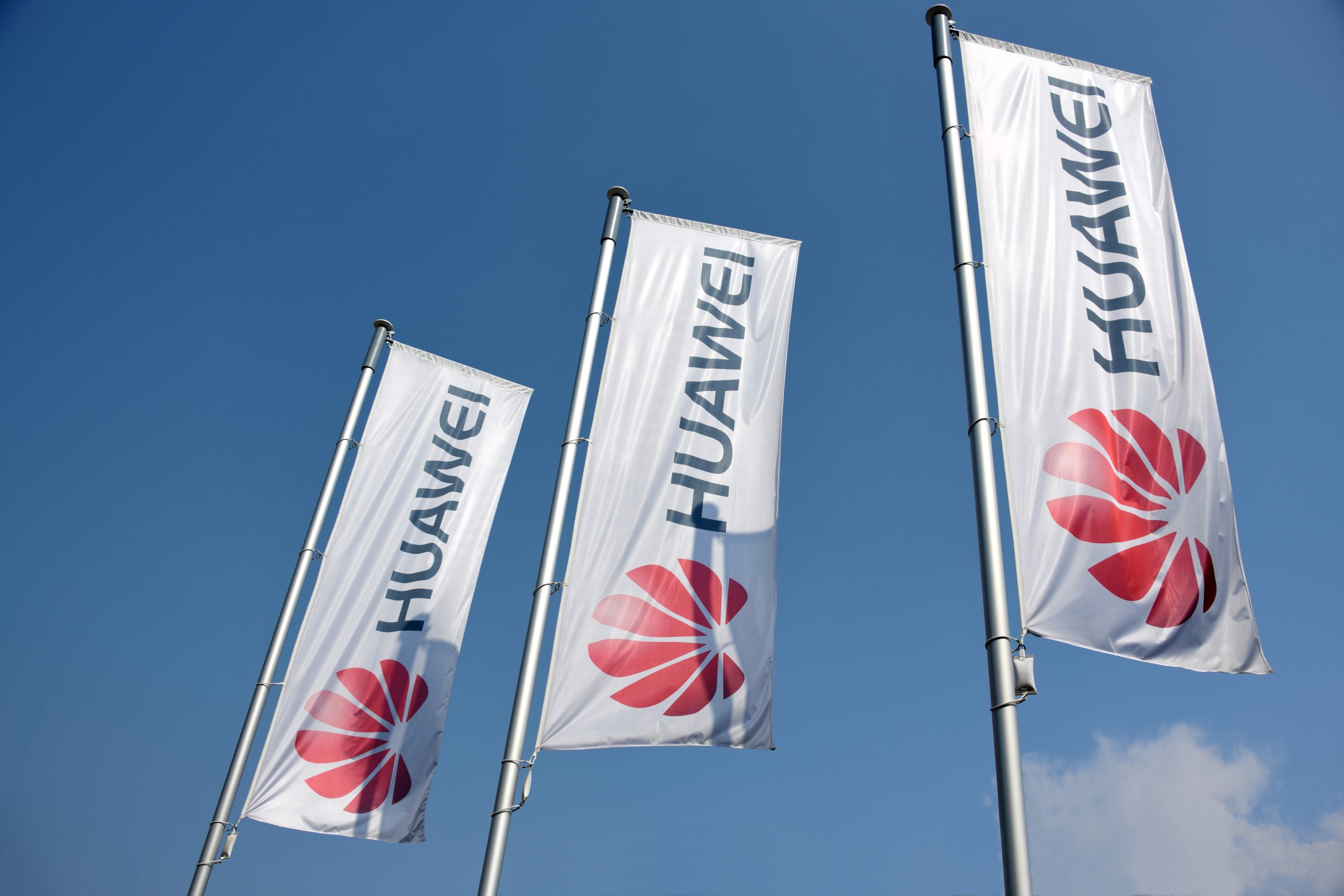What makes people go the extra mile? Is it the thrill of achievement or the promise of a reward? If you’ve ever worked late for a bonus, studied harder for good grades, or exercised for a fitness challenge badge, you’ve experienced extrinsic motivation firsthand.
In fact, studies show that 83.6% of employees agree that recognition impacts their motivation to work.
Clearly, external rewards aren’t just about short-term gains—they can drive meaningful action when used effectively. A Gallup survey found that organizations with high employee recognition see 21% higher profitability.
This explains why businesses, educators, and fitness apps use incentives like money, praise, trophies, or public recognition to encourage performance. But how does extrinsic motivation work?
Let’s explore real-world examples of extrinsic motivation and discuss strategies to balance external rewards with internal drive.
Real-World Extrinsic Motivation Examples to Inspire Action
⏰ 60-Second Summary
- Extrinsic motivation comes from external rewards like money, praise, and recognition
- It works best when balanced with intrinsic motivation (personal interest and passion)
- Examples of internally rewarding behavior include praise, promotions, bonuses, public recognition, and perks
- Extrinsic motivation boosts performance, encourages discipline, and reinforces goal-setting for personal development
- Extrinsic motivation can be overused. For example, it can decrease intrinsic motivation if used in excess, especially in workplace settings
- Leaders, managers, and educators can use emotional incentives like curiosity and passion for balance
- Leverage to track goals, automate rewards, and recognize achievements
Understanding Extrinsic Motivation
Ever pushed yourself to meet a deadline just for the bonus? Or did you study hard for an exam because of the grades at stake? That’s extrinsic motivation—the drive to complete a task because of external rewards or consequences rather than personal satisfaction.
According to self-determination theory (Deci & Ryan, 1985), motivation falls into two categories: intrinsic (internal) and extrinsic (external). Extrinsic motivation arises in many forms—money, recognition, trophies, promotions, or even avoiding punishment.
While some believe it’s a short-term fix, research suggests otherwise:
- Incentives boost performance up to 44% on average, according to a study by the Incentive Research Foundation
- Recognition is the No. 1 driver of engagement, with 69% of employees saying they would work harder if their efforts were recognized
This shows that external motivators aren’t just temporary boosts—when used effectively, they can fuel sustained effort and achievement.
Extrinsic vs. intrinsic motivation
So, how does extrinsic motivation differ from intrinsic motivation?
| Extrinsic Motivation | Intrinsic Motivation |
| Driven by external factors (money, grades, praise) | Driven by internal satisfaction (passion, curiosity, personal growth) |
| Encourages short-term action but can build habits over time | This leads to long-term engagement and personal fulfillment |
| Common in workplaces, schools, and fitness programs | Common in hobbies, passion projects, and creative work |
| Example: Working overtime for a raise | Example: Learning a language for personal enjoyment |
While intrinsic motivation refers to power, studies show that a combination of both is the most effective.
That’s why the key isn’t choosing one over the other—it’s learning how to balance both for maximum motivation and success. Let’s dive into real-world examples of extrinsic motivation and how they inspire action!
Extrinsic Motivation Examples
Extrinsic motivation surrounds us in our workplaces, schools, homes, and even our favorite apps. It may be a raise at work, a gold star in school, or a free coffee after five purchases. These external motivations push people to take action.
Let’s explore 16 powerful, real-world examples of extrinsic motivation and how they shape human behavior!
1. Praise
👀 Scenario: A manager publicly compliments an employee for successfully leading a project. The employee feels valued and strives to maintain their high performance.
🏅Why it works: Studies show that recognition is a stronger motivator than cash incentives for 67% of employees. Praise fuels motivation by reinforcing positive behaviors.
2. Food
👀 Scenario: A teacher promises students a pizza party if they read 20 books a semester. This simple reward boosts participation because students associate effort with a tasty treat.
🏅Why it works: Food is a basic human need, and using it as a reward creates a clear cause-and-effect relationship. Even in workplaces, offering complimentary snacks or coffee perks increases employee satisfaction and productivity.
3. Money
👀 Scenario: A salesperson gets a commission bonus for exceeding their monthly sales quota. The financial reward encourages them to close more deals.
🏅 Why it works: Money remains a top motivator in work environments, with 68% of employees saying financial incentives drive their performance.
4. Special privileges
👀 Scenario: A student who maintains perfect attendance earns the privilege of choosing their seat in class. This small perk increases motivation without financial incentives.
🏅Why it works: Privileges create a sense of earned freedom, making them highly motivating. Similarly, workplaces can provide flexible work hours or extra vacation days to high performers, reinforcing positive behaviors.
✨ Fun fact: The word “motivation” comes from the Latin word movere, which means “to move.”
5. Avoiding punishments
👀 Scenario: A driver follows the speed limit to avoid getting a ticket. The threat of punishment influences behavior just as strongly as excessive rewards do.
🏅Why it works: Fear of negative consequences is a powerful deterrent. In work settings, employees meet deadlines to avoid negative feedback or a lower performance rating, demonstrating how extrinsic motivation can prevent undesirable outcomes.
6. Trophies and certificates
👀 Scenario: Athletes train rigorously to win medals in the Olympics. The tangible reward represents their effort and status, driving them to compete at higher levels.
🏅Why it works: Tangible rewards like trophies symbolize achievement and provide a sense of pride. Workplaces use similar motivators—”Employee of the Month” plaques or industry awards—to celebrate excellence.
✨ Fun fact: The “Employee of the Month” concept was popularized in the 1940s as a way to boost morale and productivity in factories.
7. Good grades
👀 Scenario: A student studies harder to get an A on their report card. The grade is an external motivator, pushing students to perform well academically.
🏅Why it works: Grades are a measurable indicator of success and can open doors to future opportunities.
8. Belonging and community
👀 Scenario: People engage in volunteer work not just for personal satisfaction but to feel connected to a cause or community.
🏅Why it works: Humans are social creatures, and the desire to belong is a strong motivator. Workplaces encourage teamwork by fostering a sense of belonging, as highly engaged employees are 87% less likely to leave their companies.
9. Stickers
👀 Scenario: Kindergarten students earn gold stars for good behavior. Though simple, these stickers serve as a symbol of achievement, reinforcing good habits early on.
🏅Why it works: Stickers are simple, visual rewards that provide immediate gratification, especially for younger children. Adults experience similar motivation with habit-tracking apps that reward consistency with virtual badges!
10. Tokens (Token Economy)
👀 Scenario: A customer loyalty program gives points for every dollar spent, which can be redeemed for discounts. This system encourages repeat purchases.
🏅Why it works: Token economies teach delayed gratification and reinforce positive behavior over time.
11. A Promotion
👀 Scenario: An employee takes on extra responsibilities, hoping to earn a promotion and a new job title.
🏅Why it works: Promotions come with increased status, salary, and opportunities, making them highly desirable. They are a powerful extrinsic motivator to increase job retention and engagement.
12. Public recognition
👀 Scenario: A company celebrates its top performers in a quarterly meeting, giving them a shoutout in front of colleagues.
🏅Why it works: Public recognition satisfies our need for acknowledgment and boosts self-esteem. It is a major driver of workplace satisfaction, with 50% of employees citing it as their top motivator.
💡Pro Tip: Want to make rewards more effective? Surprise incentives work better than expected rewards because they trigger a stronger emotional response.
13. Social status
👀 Scenario: A person buys a luxury car or designer clothing to signal their success. Status symbols can be strong motivators, influencing purchasing decisions and lifestyle choices.
🏅Why it works: Social status fulfills our desire to be seen as successful or influential. In corporate settings, job titles, executive perks, and leadership roles reinforce motivation by appealing to social status.
14. Quality time
👀 Scenario: A child completes their chores to earn extra time with their friends—a reward beyond material incentives.
🏅Why it works: Quality time strengthens relationships and creates positive memories. Even in professional settings, leaders spending more time mentoring high-performing employees serve as an extrinsic motivator, reinforcing strong work habits.
15. Discounts
👀 Scenario: Shoppers are more likely to buy a product if there’s a “limited-time” discount.
🏅Why it works: Discounts provide immediate financial benefits, making them a strong incentive. This tactic is used everywhere—from Black Friday sales to membership discounts—as an extrinsic motivation strategy to drive purchases and customer loyalty.
16. Attention
👀 Scenario: Social media influencers create viral content to gain more likes, shares, and followers. The external validation drives them to produce more content.
🏅Why it works: Attention satisfies our need for validation and boosts confidence. In workplaces, employees who receive more face time with executives or managers often feel more extrinsically motivated to perform well.
From childhood rewards to workplace incentives, extrinsic motivation drives action in nearly every aspect of life. These motivators influence our decisions, habits, and productivity.
But here’s the catch: while extrinsic motivation refers to being highly effective, it’s not a one-size-fits-all solution. Let’s explore the pros and cons of relying on external rewards—and how to strike the perfect balance!
🧠 Did you know? Even seemingly intrinsic motivations can have an extrinsic component. For example, someone might enjoy painting (intrinsically motivated), but the desire to exhibit their art in a gallery (extrinsic) can further fuel their passion and drive them to improve.
The Pros and Cons of Extrinsic Motivation
While extrinsic motivation can boost productivity, performance, encourage discipline, and reinforce positive habits, it also has potential downsides that need careful management.
The benefits of extrinsic motivation
1. Incentives 🏁
When people know there’s a reward at the finish line, they’re more likely to stay engaged. External rewards like money, praise, or trophies provide a clear reason to take action. For example, sales teams often hit higher targets when bonuses are offered.
2. Reinforcement 🏁
Positive reinforcement, such as praise, rewards, or recognition, strengthens the likelihood of a behavior being repeated.
For instance, a child who receives a sticker for completing homework is more likely to repeat the behavior. This is especially effective in shaping habits in the short term.
🧠 Did you know? Dopamine, the brain’s “reward chemical,” is released when we achieve small wins—making progress tracking a natural motivator!
3. Goal setting 🏁
Extrinsic motivators can be effectively linked to specific, measurable goals. This provides a clear target to aim for, making the desired outcome more concrete and attainable.
For example, a student might be motivated to study harder by the goal of achieving a specific grade on an exam.
4. Discipline 🏁
The desire for external rewards or avoiding negative outcomes can promote discipline and perseverance. Knowing a payoff for hard work or a penalty for failure can motivate individuals to stay focused and committed, even when faced with challenges.
The limitations of extrinsic motivation
1. Risk of dependency ⛳
Over-reliance on external rewards can undermine intrinsic motivation. For example, if a student only studies to earn good grades, they may lose intrinsic interest in learning for its own sake. Psychologists call this the “overjustification effect.”
2. Short-term focus ⛳
Extrinsic motivation often prioritizes immediate rewards over long-term growth. For instance, an employee might focus on meeting quarterly targets for a bonus but neglect skill development that benefits their career in the long run.
✨Fun Fact: Even animals can be motivated by extrinsic rewards! Think of a dog learning tricks for a treat or a dolphin performing for fish.
3. Potential for burnout ⛳
Constantly chasing external rewards can lead to stress and burnout. A study suggests that 82% of the workforce feels burned out at work often or always, often due to excessive pressure to meet external goals, which also affects productivity at work.
4. May undermine creativity ⛳
Extrinsic rewards can stifle creativity, especially in tasks that require innovation. Research by Teresa Amabile, a Harvard professor, shows that people are less creative when motivated by external rewards compared to intrinsic passion.
While extrinsic motivation can be a useful tool, it’s not a substitute for fostering genuine interest and passion.
📮 Insight: Monday blues? Turns out Monday stands out as a weak link in weekly productivity (pun unintended), with 35% of workers identifying it as their least productive day. This slump can be attributed to the time and energy spent hunting for updates and weekly priorities on Monday mornings.
An everything app for work, like , can help you here. For instance, Brain, the built-in AI assistant, can ‘catch you up’ on all critical updates and priorities in seconds. And, everything you need for work, including integrated apps, is searchable with ’s Connected Search. With ’s Knowledge Management, building a shared point of reference for your organization is easy! 💁
Strategies to Effectively Utilize Extrinsic Motivation
Extrinsic motivation can be a game-changer—when used correctly.
But here’s the catch: if people rely solely on rewards like money, grades, or promotions, their engagement can fizzle out the moment those incentives disappear. So, how do you strike the perfect balance?
Balancing intrinsic and extrinsic motivation
Extrinsic motivation works best when it complements—not replaces—intrinsic motivation. For instance, imagine a team that’s only motivated by bonuses. They’ll push hard when the reward is in sight—but what happens when there’s no immediate incentive? Performance dips.
Now, imagine a team that’s excited about the work itself, driven by curiosity and personal growth. They don’t just chase incentives; they thrive on problem-solving, collaboration, and creativity.
🏆 How to Apply It:
- If you’re a student, aim for good grades (extrinsic) but also focus on the joy of learning and mastering new skills (intrinsic)
- If you’re a manager, reward your team with bonuses (extrinsic) but also create opportunities for them to grow and find meaning in their work (intrinsic)
The goal is to create a synergy where external rewards amplify internal satisfaction.
Incentivizing with happiness and curiosity
Extrinsic motivators don’t always have to be tangible. Sometimes, the best rewards are experiences or emotions.
For instance, Tech companies like Google offer “20% time”—where employees can work on passion projects during work hours. The result? Innovation thrives without the need for constant external rewards.
🏆 How to apply it:
If you’re managing a team, incorporate gamification, learning challenges, or creative freedom into tasks to boost engagement beyond financial incentives.
But what if there was a tool that helps you strike the perfect balance between extrinsic and intrinsic motivation? That’s where shines.
One of the biggest challenges with extrinsic motivation is consistency—if people aren’t reminded of their goals, rewards lose their power. ensures that doesn’t happen.
Automations
Automations helps managers and teams stay on track by:
- Sending automatic reminders for deadlines, rewards, and check-ins
- Triggering follow-ups when tasks are completed
- Assigning rewards-based tasks automatically when a milestone is hit
📌 Example: Imagine a sales team working toward a quarterly bonus. Instead of constantly checking progress, can automatically notify team members when they hit key milestones—keeping them engaged without micromanagement.
Goals
Motivation fades when goals feel too big, unclear, or distant. Goals eliminates this problem by breaking down long-term targets into manageable steps.
With Goals you can:
- Set clear, measurable targets: Assign specific metrics (e.g., sales numbers, completed projects, task deadlines) tied to incentives
- Automate progress tracking: No need to check manually— updates goal progress automatically as tasks are completed
- Keep motivation high: Employees can visually track goal progress, making rewards feel tangible and achievable
📌 Example: A company offering a quarterly bonus for high-performing employees can create a Goal that tracks each team member’s task completion, project contributions, or sales revenue. As employees complete their work, automatically updates their progress toward the reward.
Tasks
While goals provide the big picture, tasks are the building blocks that get you there. Tasks ensures that every goal is broken down into achievable, deadline-driven tasks—keeping people engaged and focused.
Here’s how:
- Set due dates & priorities: Ensures people stay accountable and progress toward rewards
- Automate reminders & recurring tasks: Prevent people from losing momentum by automating follow-ups and next steps
- Assign responsibilities clearly: Makes expectations crystal clear so no one is left guessing
📌 Example: A manager using Tasks can assign weekly sales targets to their team with automated reminders and follow-ups. Employees who hit their targets earn bonuses, and progress is tracked automatically.
Dashboards
Extrinsic motivation thrives on visibility and recognition. People work harder when they can see their progress and when their achievements are acknowledged. Here’s how Dashboards enhance extrinsic motivation. You can:
- Track real-time updates on individual and team performance
- Ensure external rewards (bonuses, promotions, recognition) are linked to clear, trackable metrics
- Highlight top performers visually, reinforcing motivation through public acknowledgment
📌 Example: A sales team working toward a monthly bonus can use a Dashboard to track sales performance in real time. Seeing their progress toward the target keeps motivation high, and top performers can be recognized publicly
Personal Productivity Report Template
That’s not all! You can also use the Personal Productivity Report Template to track individual performance, helping employees stay motivated and accountable.
As productivity expert James Clear, author of Atomic Habits, says, “You do not rise to the level of your goals. You fall to the level of your systems.” is the system that keeps you rising.
Brain
Want to come up with unique extrinsic motivation strategies to improve team morale and performance? Brain, ’s powerful AI assistant, has got you. You can add a prompt explaining specific team challenges and get actionable strategies to motivate your team.


Learn how to use AI for productivity!👇
Stay Motivated, Achieve More with
Extrinsic motivation is everywhere—from pay raises to praise, bonuses to belonging. But here’s the secret: offering excessive external rewards alone won’t sustain motivation—you need a system that keeps people engaged, accountable, and excited to push forward.
That’s where steps in. Imagine a workplace where goals aren’t just set—they’re tracked, celebrated, and seamlessly connected to real progress. Instead of micromanaging or chasing deadlines, let do the heavy lifting.
Ready to turn motivation into momentum? Sign up for today and make every goal a reality!


Everything you need to stay organized and get work done.














